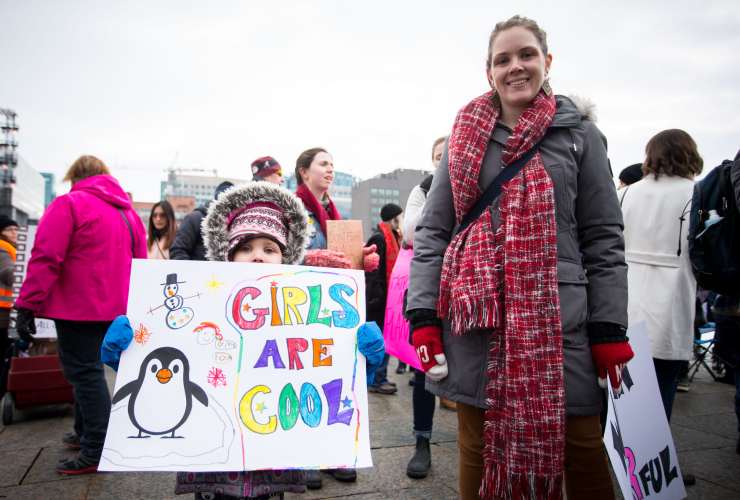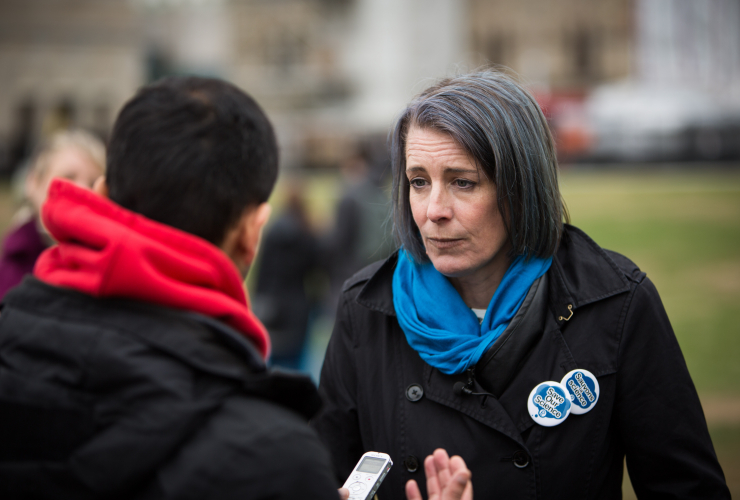Nearly half of the women surveyed in a union representing professionals and scientists in the federal government believe that gender bias is blocking their career advancement, indicates a new report released on Wednesday.
Even though more women than ever are pursuing careers in science, the report unveiled new data showing that 42 per cent of surveyed professional members of the public service who identified as women believe gender bias is a career barrier, and one in four believe men are favoured when opportunities for leadership arise. Further, they found that there are less women in two key federal scientific research units than in the general workforce.
The Professional Institute of the Public Service of Canada, which represents six federal science bargaining groups, released the numbers from a survey as part of a report on the eve of International Women's Day. It coincides with a federal government push for pay equity legislation and a gender-based analysis of the economy.
“These issues are structural in many different cultures and societies,” said Susan O'Donnell, a member of the report’s editorial team, in an interview March 6. O'Donnell recently retired from her position as a senior research officer at the National Research Council.
“It’s going to take some action and some focus as the leadership to make the changes that we need to be seeing here.”
The report, called Women in Public Sector Science: From Analysis to Action, uses data from a survey commissioned for PIPSC. The survey was emailed to 16,377 PIPSC science and engineering members between May 29 and June 27, 2017.
The same survey also examined the issues of funding cuts and scientists’ right to speak. Another report from the findings, called Defrosting Public Science, found that the public service was continuing to muzzle federal scientists, with senior public servants "clinging" to Harper government-era rules.
The union admits this analysis is new territory, and “stronger self-identification data is required to complete more robust analyses.” The surveyors received 3,025 responses, a response rate of 18.5 per cent, and 38 per cent of respondents identified as women.
“This kind of report is actually new for us,” said O’Donnell, who has a Doctor of Philosophy in Communications from Dublin City University. “We were trying to actually do something that would create a baseline of knowledge for the first time, for women researchers and scientists in the public sector.”
Eight respondents, or 0.3 per cent, identified as non-binary, 58 per cent as men and three per cent preferred not to identify. The union says it is committed to intersectional activism and will strive to enhance its intersectional approach “in future” so it does not lose sight of identities important to marginalized groups.

Public service ‘resistant to change’
The survey found that public sector science women under 30 who were surveyed were twice as likely as older members to think men receive better treatment.
This perception differed depending on gender. “Though many believed that women and men are treated equally in the workplace, women perceived more strongly that men receive favourable treatment in the workplace,” reads the report.
The report also states that older generations “may perceive less gender bias today compared with their past experiences.” Data shows gender discrimination has not declined in the public service as rapidly as some might think, it argued.
O'Donnell said many managers in the public service are at the 20- or 30-year mark in their careers and have seen many positive changes in terms of gender, including the fact that there were traditionally few women scientists.
Younger women “quite rightly have higher expectations for equality,” she said, after they graduate from STEM (Science, Technology, Engineering and Mathematics) programs that have greater numbers of women than they did before.
“They’re expecting that they will have fulfilling careers, and they’re not expecting that they’ll run into this kind of thing. When they do — when they get into the government — maybe they’re kind of shocked at some of the attitudes that they’re experiencing,” she said.
“The public service is a big behemoth institution that is essentially very small-c conservative, in that it’s very resistant to change.”
She added the issue extended beyond the public service — as evidenced by the backlash in Silicon Valley over its marginalization of women.
“Maybe it’s not so much different between the public and the private sector, but it is definitely embedded in the culture of the public sector,” she said.
“Science is generally understood and seen by many people to be a very male-dominated field.”
The survey also found significantly fewer women than men think they can satisfy both job and family or personal responsibilities. About 10 per cent more men than women said these kinds of responsibilities weren’t a barrier to their careers.
O’Donnell said one issue in the public service is probation — a two-year period in the core public service, and a three-year period at Canada’s federal research council. This affects women in particular, she said.
By the time women go through school and join the public service, they’re in their early 30s — and then must face these two-year or three-year periods of uncertainty.
“These are the kinds of things that need to be looked at in terms of barriers and constraints in encouraging women to come into public sector science,” she said.
Union wants ‘new or better workplace legislation’
The union is calling for “new or better workplace legislation,” building on the federal Employment Equity Act, including through better addressing “informal workplace practices.”
It says the public sector’s “stated goals” of hiring more women scientists to meet an “arbitrary standard” of between 20 and 40 per cent available in the labour market is a “nebulous” goal. And it states that the employment equity compliance process does not assess workplace culture.
Women account for close to half of the workforce but represent a third of senior managers and one in 20 CEOs, the federal budget has noted.
Science Minister Kirsty Duncan has spoken out about a lack of women scientists in leadership positions. She was not immediately available for comment before publication.
The government is expected to introduce pay equity legislation this fall, applying to federal employers with 10 or more staff members. The government is also expected to lay out timelines for implementation.
Despite the state of scientists in the public service when it comes to gender equality, the union welcomed the budget’s gender analysis, said O’Donnell, especially compared to the pitched battles it had with the Harper government over muzzled scientists.
“I could be — if I wanted to — very critical of the government, but we have to acknowledge and celebrate the fact that they’re highlighting this now,” she said.
“I honestly don’t know if this would have happened under the previous government.”
Editor's note: This story was updated at 1:45 p.m. ET on March 7 to include a photo and more information of O'Donnell.




Comments